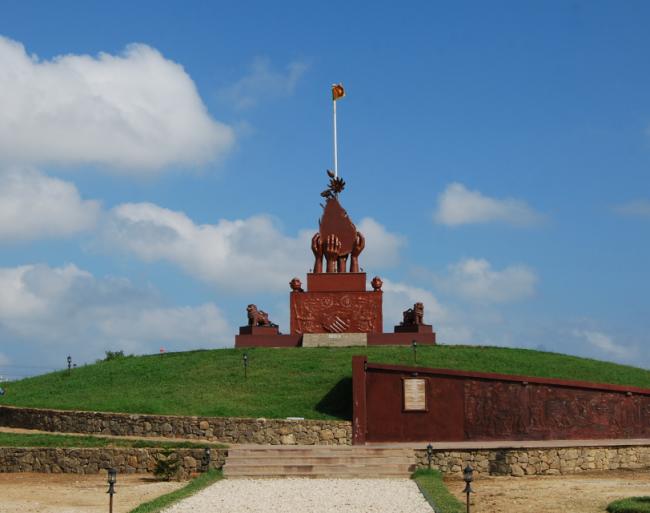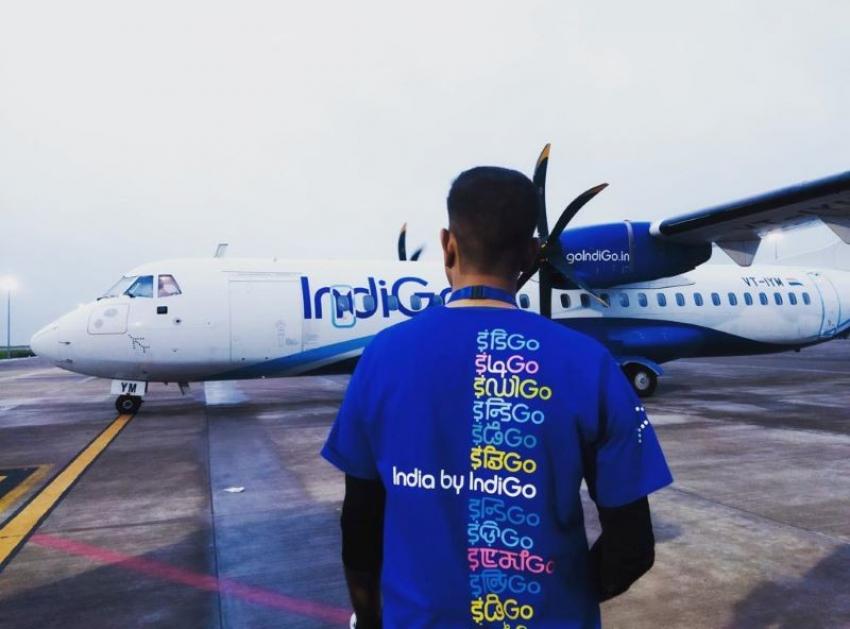Your Turn
First Person
Lanka lore: Dateline elephant pass
By Kingshuk Mukherji 29 Jan 2015, 07:14 am

January 17, 2015
It’s a windy January evening and I am at Elephant Pass — the causeway connecting the Sri Lankan mainland to the Jaffna Peninsula. This strip of road, that rises from an expanse of still water and stretches till the distant horizon, has witnessed some trying years in the country’s history. Some years ago, Lankan soldiers smashed entrenched LTTE positions here, and won it back in a major offensive.
The windswept pass is a picture of placidity. An occasional bus rumbles by on its journey to the key military town of Chavakacheri or drives upcountry to Jaffna. A railway line runs parallel to the neat concrete road. Driving south from Jaffna, where the A 9 Highway melts into the pass, is a war memorial with the Lankan flag proudly fluttering atop. On a lonely afternoon, men in tracksuits mow the grass on the lawns. An army man stands guard.
A war theatre till 2009, the pass fell to the army after a determined offensive that year in January. The Tigers had seized control of the causeway in 2000 dislodging the Lankan forces from their heavily garrisoned positions. More than a 1,000 Lankan soldiers died in that battle. The LTTE controlled the A9 Highway, levying taxes and monitoring access to the northern areas.
Plaques mounted on the memorial recall the valour of the Lankan forces and how ground troops of the 53rd and 55th Divisions accomplished their task. The flatness of terrain would have given the clashing enemies a clear view of each other’s movements but for the thick, lush shrubbery.
The soil here once soaked in blood and it’s easy to imagine what this place would have looked like some years ago – the horrors of war that played out. When the guns boomed, shells streamed through the air and hit targets with a thud, hand to hand combats, the victor’s exultations and the vanquished cries of anguish and desperation.
Where the causeway ends, the army has raised a war museum dedicated to a young soldier, Lance Corporal Gamini Kularatne, a war hero who in 1991 single-handedly saved thousands of Lankan troops from being massacred by advancing LTTE forces. On July 10, 1991, as wave after wave of LTTE cadres nearly swamped a modest army garrison, Kularatne saw a strange beast — a modified bulldozer painted in camouflage colours advance menacingly towards the army position. Kularatne charged at it, took several bullet hits before clambering on to the improvised war machine, opening its hatch and tossing grenades into it.
Statue of Lance Corporal Gamini Kularatne (left) and the bulldozer tank
Statue of Lance Corporal Gamini Kularatne (left) and the bulldozer tank
He saved the day for his country and died a hero’s death. He was awarded Lanka’s highest military award, the Parama Weera Vibhushanaya, for his supreme sacrifice. Today, the death machine is a trophy at the museum that houses a statue of the war hero, his photographs and a voice over narrates the daring man’s saga.
Further down the road is the town of Kilinochhi, once the de facto capital of LTTE’s proposed Eelam (homeland). The town fell to the Tigers first in 1990, when the army pulled out. Under Tiger control, the town served as its administrative headquarters, had a separate police force, a judicial system and a supreme court. It was not until 2008-09 that the army won it back in a determined three-pronged offensive.
The highway serves as the town’s main street and on it are the ruins of a gigantic water tank that the retreating LTTE forces had blown up. The wreckage of that shattered water tank today serves as a war relic. The same blue board warning residents here to “say no to destruction… never again” stands close by, a reminder of the state’s power and authority.
Minutes from there is yet another war monument, this one a huge block of concrete, cracks etched on it with a gigantic golden bullet sticking out. The memorial plaque celebrates the victory march of the Lankan forces and insists it was to crush the forces of terrorism and restore peace and order.
A January evening at Kilinochhi isn’t out of the ordinary, people going about their business, motor garages fixing broken down cars, a noisy vegetable market, bus station crawling with people, eateries catering to clients, a group of girls on cycles returning from college, cars and trucks pulling up at filling stations. But the army camps lining the streets, soldiers at sentry posts looking sharp, finger on trigger, military trucks going up and down the street bring to the fore a sense of simmering, underlying tension.
All is well here, yet perhaps all is not well. It’ll take a while for wounds to heal, fissures to close. It’ll take a while for the bitterness to die.
(The writer is an Associate Editor with a leading Indian English daily and a passionate traveller)
Courtesy: http://kingshukmukherji.
Visit the original source at : https://kingshukmukherji.
More Your Turn
- Dia Mirza says JapanSurprises
- Shikhar Dhawan un-discovers Australia
- Journey through the frames of India
- Anthony Bourdain: The man who inspired me to move
- Pleasure of leisure
- Want to have best train ride? Visit Thailand!
- Lamp with 1001 wicks lighted in Bhopal
- Bhagoriya marks festivity of holi in tribal parts of Madhya Pradesh
- New York: Parks parks parks - from Hudson to East River
- Celebration on the streets of New York
Toronto to Rio: Air Canada ...
Air Canada has introduced a new non-stop route connecting Toronto with Rio de Janeiro, with the first flight landing in the Brazilian city on Friday morning.
Air India's partnership wit ...
Air India, India’s leading global airline, and Maldivian, the national airline of the Maldives, have entered a bilateral interline partnership aimed at boosting connectivity between the two countries.
Massive meltdown at IndiGo: ...
IndiGo, India’s largest airline, is grappling with one of its most severe operational crises in recent years, with widespread flight delays and cancellations disrupting travel across the country for a second consecutive day.





